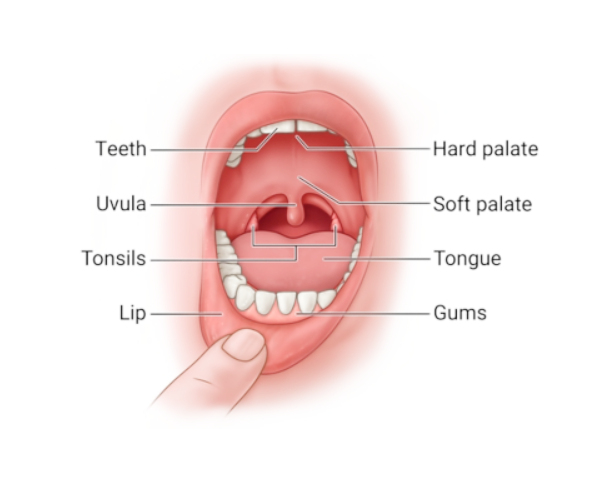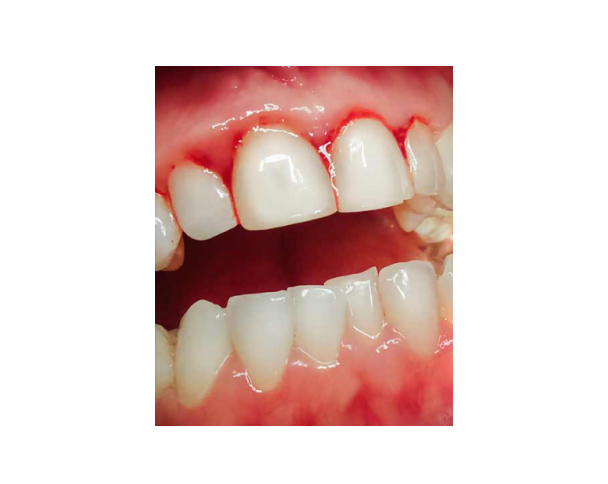Table of Contents
ToggleAll potential sites for mouth cancer are the tongue, lips, gums, floor of the mouth, and roof of the mouth, which is also known as oral cancer. Types of mouth (oral) cancer based on where it occurs, mouth cancers can be categorized.
Types of Oral (mouth) Cancer by Region

Lips Cancer
Lip cancer is the most common area of mouth cancer. It is both a skin cancer and an oral cancer, but is typically treated as an oral cancer depending on the location. If diagnosed early, the prognosis for lip cancer is favorable. With early detection, treatment is usually surgery without the need for radiation therapy, chemotherapy or lymph node removal. More advanced cases can result in the spread of tumors into nearby nerves and the jawbone which may require more extensive surgery and treatments.

Members of the reconstructive team at Penn Center for Head and Neck Cancer use the latest advancements to reconstruct defects of the upper lip with minimal to no scarring, while maintaining competence of the lips to prevent problems such as drooling or difficulty speaking.
Gums Cancer
Most of the time, something grows on the outside of the gums to cause gum cancer. It is much of the time a mass and can be either red or white. It could also bleed. In contrast, gingivitis is an early-stage infection of the gumline brought on by the irritation-causing bacteria that live there naturally.

Smoking and chewing tobacco use are two of the risk factors that are shared by gum disease and gum cancer. Gum cancer, also known as cancer of the alveolar ridge, is more common in those who use of cigarettes and chewing tobacco. Fortunately, it is now much less common. Side effects of gum malignant growth might include: gums that are white, red, or dark; gums that are bleeding or cracking; gums that are thick.
Surgery is almost always the first step if a relatively small lesion is present. However, if teeth are involved, we may also need to extract them. Also, if something is growing into the jawbone, it starts to build much more difficult surgeries that need to be replaced.
After surgery, sometimes administer chemotherapy or radiation is given to a patient. However, decisions regarding care should always be made in a multidisciplinary setting.
If detected early, gum cancer is highly curable. A head and neck cancer surgeon often performs surgery as part of the treatment. The objectives of gum cancer treatment are to cure the cancer; maintain your appearance and oral functions; and prevent the cancer from returning.
Tongue Cancer
Several kinds of diseases can influence the tongue. However, tongue malignant growth most frequently starts in the slim, level squamous cells that line the outer layer of the tongue. The kind of cells engaged with your tongue disease decides your therapy and treatment.
The tongue is made up of two parts:
Both the oral tongue and the base of the tongue can develop cancer. The oral tongue is the part you see when you jab your tongue out at somebody. This is the front 66% of your tongue. A category of cancers known as mouth (oral) cancer includes cancers that originate in this region of the tongue.
The majority of tongue cancers have no known cause, but several risk factors have been identified. Smoking tobacco (pipes, cigars, and cigarettes) and regularly drinking a lot of alcohol are both harmful. Progressively, malignant growths at the base of the tongue are related with human papillomavirus (HPV), which significantly affects the prognosis and therapy of the disease.
The side effects of tongue disease could include:

• A red or white fix on the tongue that will not disappear
• An irritated throat that doesn’t disappear
• A sensitive area (ulcer) or bump on the tongue that doesn’t disappear
• Pain while gulping
• Deadness in the mouth that will not disappear
• Agony or consuming inclination over the tongue
• Issues moving your tongue or talking
• Unexplained draining from the tongue (that is not brought about by keeping quiet or another injury)
• Pain in the ear (uncommon)
Keep in mind that these symptoms may be caused by a condition that is not as serious. However, just to be safe, it’s best to check your symptoms with your doctor.
The following factors affect how tongue cancer is treated:
- The phase of your malignant growth.
- Where the malignant growth is on your tongue.
- Your overall wellbeing.
- Your mouth will be examined by your doctor, and questions about your symptoms will be asked. They might suggest an x-beam or CT (electronic tomography) examination is taken from various points and set up to show a more itemized picture. A biopsy, or oral tissue sample, may also be taken for testing.
Surgery to remove cancer from the tongue is typically the treatment for tongue cancer. Additionally, targeted drug therapy, radiation therapy, and chemotherapy may be suggested.
Advanced tongue cancer treatment can make it harder to talk and eat. You can better manage the changes brought on by treatment for tongue cancer by working with an experienced rehabilitation team.
Conclusion
We discussed Types of Lip and Oral (Mouth) Cancer by region above which is lip, jaw & gum, and tongue cancer also discussed how it occur.

Designation: Consultant & Unit Chief/Program Director Head & Neck Oncology
Qualification: MBBS, MS(ORL-HNS), Fellowship Head & Neck Oncology
Department: Head and Neck Oncology Unit
Special interest: Reconstructive surgery and Minimal Invasive surgery in Head & Neck
